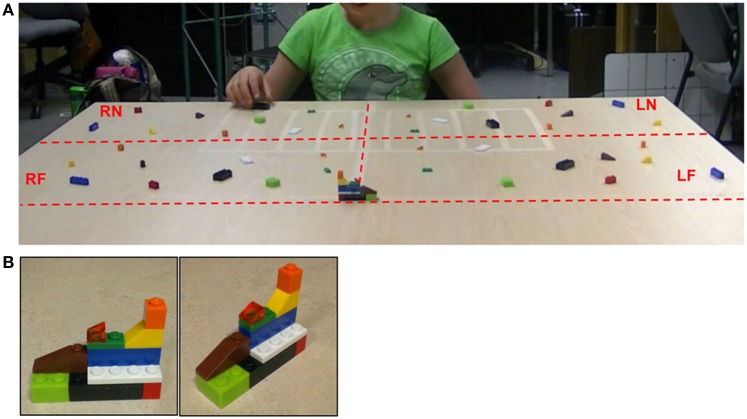Figure 1.
(A) The picture illustrates the workspace used by older children (9 and 10 years old) in the grasp-to-construct task. The table was notionally divided into four quadrants of equal dimensions (lines were not visible). Four identical sets of 10 pieces were placed on the tabletop—one set in each quadrant in near-mirror image placements. Within a set, pieces were unique in color and shape. The model to be replicated on each trial was placed at the far border of the workspace, aligned with the child's midline. (B) The figure demonstrates the first model older children were prompted to replicate in the grasp-to-construct task, from straight-on and side view angles. Each of the four models was composed of one piece set (contained in each quadrant on the table). Models were arranged such that they could be fully understood from a straight-on viewing angle, however, participants were allowed to pick up and rotate the model at any point during construction.

